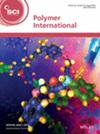Miaojia Ye, Qian Hu, Xiaoyue Huang, Yiwen Wang, Wanchao Wu, Xinzhe Zhang, Chonggang Wu, Chuanqun Hu
求助PDF
{"title":"Bio-derived high-strength waterborne polyurethane using cellulose-nanofiber-stabilized Pickering emulsion","authors":"Miaojia Ye, Qian Hu, Xiaoyue Huang, Yiwen Wang, Wanchao Wu, Xinzhe Zhang, Chonggang Wu, Chuanqun Hu","doi":"10.1002/pi.70009","DOIUrl":null,"url":null,"abstract":"<p>Renewable biomass resources, including castor oil and cellulose, present promising avenues for sustainable polymer synthesis. This study involved the fabrication of a novel waterborne polyurethane utilizing cellulose nanofibers (CNFs) as a Pickering emulsion stabilizer and castor oil as a bio-derived polyol. Two different CNFs assessed the function of CNFs in stabilizing castor-oil-derived waterborne polyurethane emulsions by the ratio, their concentration and the emulsion storage duration. Dynamic light scattering and rheological assessments established that CNFs significantly enhanced emulsion stability by forming a semi-flexible network, which impeded droplet coalescence. Moreover, the incorporation of CNFs improved the mechanical performance of castor-oil-derived waterborne polyurethane films. Specifically, the addition of 1 wt% of the longer CNF resulted in an increase in the tensile strength and Young's modulus to 21.2 MPa and 91.0 MPa, respectively, signifying improvements of 103.0% and 256.6% over the CNF-free control. This investigation underscores the synergistic potential of biomass-derived nanomaterials in the design of high-performance, environmentally friendly polymers. © 2025 Society of Chemical Industry.</p>","PeriodicalId":20404,"journal":{"name":"Polymer International","volume":"74 11","pages":"1003-1013"},"PeriodicalIF":3.6000,"publicationDate":"2025-07-10","publicationTypes":"Journal Article","fieldsOfStudy":null,"isOpenAccess":false,"openAccessPdf":"","citationCount":"0","resultStr":null,"platform":"Semanticscholar","paperid":null,"PeriodicalName":"Polymer International","FirstCategoryId":"92","ListUrlMain":"https://scijournals.onlinelibrary.wiley.com/doi/10.1002/pi.70009","RegionNum":4,"RegionCategory":"化学","ArticlePicture":[],"TitleCN":null,"AbstractTextCN":null,"PMCID":null,"EPubDate":"","PubModel":"","JCR":"Q2","JCRName":"POLYMER SCIENCE","Score":null,"Total":0}
引用次数: 0
引用
批量引用
Abstract
Renewable biomass resources, including castor oil and cellulose, present promising avenues for sustainable polymer synthesis. This study involved the fabrication of a novel waterborne polyurethane utilizing cellulose nanofibers (CNFs) as a Pickering emulsion stabilizer and castor oil as a bio-derived polyol. Two different CNFs assessed the function of CNFs in stabilizing castor-oil-derived waterborne polyurethane emulsions by the ratio, their concentration and the emulsion storage duration. Dynamic light scattering and rheological assessments established that CNFs significantly enhanced emulsion stability by forming a semi-flexible network, which impeded droplet coalescence. Moreover, the incorporation of CNFs improved the mechanical performance of castor-oil-derived waterborne polyurethane films. Specifically, the addition of 1 wt% of the longer CNF resulted in an increase in the tensile strength and Young's modulus to 21.2 MPa and 91.0 MPa, respectively, signifying improvements of 103.0% and 256.6% over the CNF-free control. This investigation underscores the synergistic potential of biomass-derived nanomaterials in the design of high-performance, environmentally friendly polymers. © 2025 Society of Chemical Industry.
生物衍生的高强度水性聚氨酯,采用纤维素-纳米纤维稳定的皮克林乳液
可再生生物质资源,包括蓖麻油和纤维素,为可持续聚合物合成提供了有前途的途径。本研究利用纤维素纳米纤维(CNFs)作为皮克林乳液稳定剂,蓖麻油作为生物衍生多元醇,制备了一种新型水性聚氨酯。两种不同的CNFs通过配比、浓度和乳液储存时间来评估CNFs在蓖麻油衍生水性聚氨酯乳液中的稳定作用。动态光散射和流变评估表明,CNFs通过形成半柔性网络显著提高乳液稳定性,从而阻碍液滴聚结。此外,CNFs的加入改善了蓖麻油衍生水性聚氨酯薄膜的机械性能。具体来说,添加1wt %的长CNF导致拉伸强度和杨氏模量分别增加到21.2 MPa和91.0 MPa,比不添加CNF的控制提高了103.0%和256.6%。这项研究强调了生物质衍生纳米材料在高性能、环保聚合物设计中的协同潜力。©2025化学工业协会。
本文章由计算机程序翻译,如有差异,请以英文原文为准。


 求助内容:
求助内容: 应助结果提醒方式:
应助结果提醒方式:


